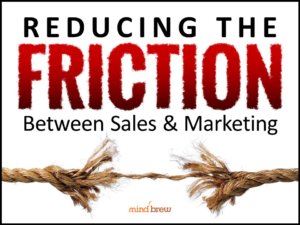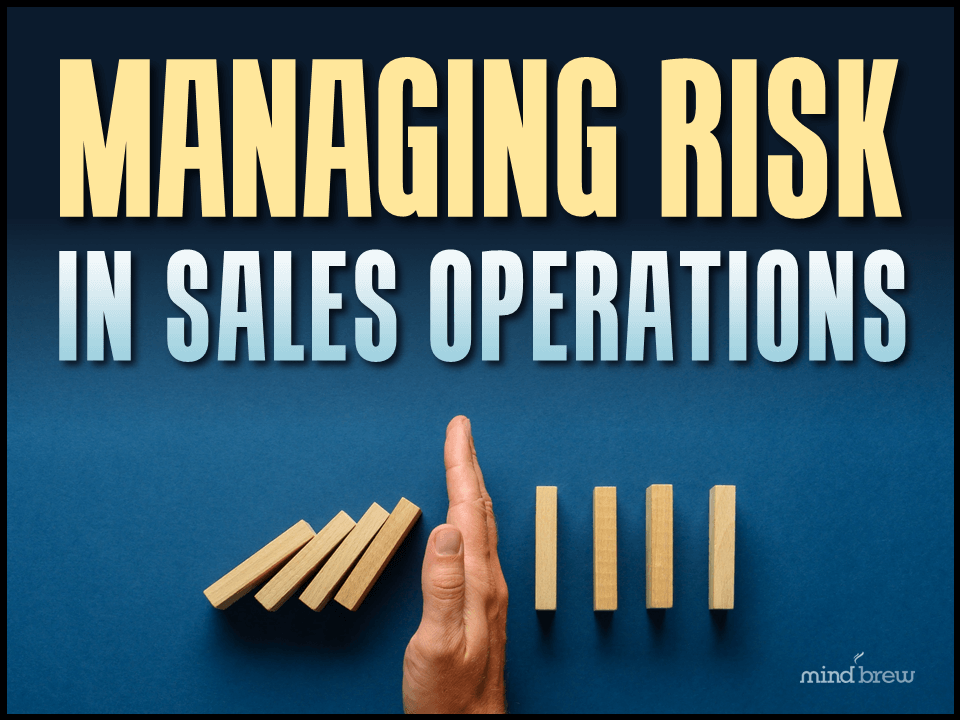In normal times, “good enough” is often perfectly acceptable to everyone else.
Haphazard sales processes, messy pipelines, vague territory plans, clunky approval workflows, misaligned sales and marketing messaging, and ill-prepared sales reps limping along with stretch goals and some tribal knowledge? Sure, it’s not great. But when things are fairly stable, no one seems to be in a big hurry to fix it.
A Sales Ops professionals, though, we see the cracks forming long before anything breaks. And we know that “good enough” is only good enough until it’s not.
Then the market shifts dramatically. Trade policies change. Demand spikes. Supply dries up. Competitors panic. Costs lurch. And just like that, the same broken sales processes and systems everyone was just fine with ignoring yesterday now become existential pain points.
Ironically, that’s also when everyone finally starts asking the right questions…and actually listening to the answers.
Chaos is frustrating. But it’s also a rare moment when Sales Ops can step forward, fix what’s broken, and implement the better systems and processes we’ve been pushing all along—but without the usual resistance and foot-dragging.
Chaos Is a Rare Opportunity to Drive Change
Under relatively calm market conditions, trying to overhaul sales processes or implement new selling systems can feel like we’re conducting a fire drill at a family wedding. The sales team rolls their eyes. Other stakeholders groan. Top executives and budget approvers ask why we’re trying to “fix what isn’t that broken.”
But throw in a major market disruption? Sprinkle in some chaos? Well, that has a way of changing everything.
Suddenly, we’re not just making a case for preventive maintenance—we’re responding to an emergency. And in emergencies, people tend to listen. The chaos gives us the cover, the urgency, and the internal support to finally fix what we’ve known to be broken all along.
While We Have Their Attention, Fix What Matters
Now, the window doesn’t stay open forever so we have to make the most of it. As we discuss in the Selling Through Uncertainty on-demand briefing, the best place to start is with some fundamentals:
- Improve Segmentation and Targeting — Generic targeting and top-down account lists don’t cut it in chaotic market conditions. Refresh the sales segmentation models based on actual data—needs, buying behaviors, market dynamics. Tighten up the targeting definitions to help reps zero in on the accounts that matter most right now.
- Streamline Sales Processes and Workflows — Manual tasks and bloated processes that were merely annoying last quarter are now major hurdles. Cut out the unnecessary. Automate the repetitive. Help our reps focus on selling and not just updating CRM fields.
- Get Serious About Intelligence Gathering — Monitor upstream and downstream signals to spot supply and demand shifts before they happen. Monitor competitor moves, pricing behavior, and customer sentiment. The more we know, the more proactive…and less reactive…we can be.
- Upgrade Analytical Tools and Reporting — Under chaos and uncertainty, leadership demands fast and accurate insights. That monster spreadsheet we’ve been cobbling together for two years? Replace it. Get the dashboards, alerts, and systems that can reduce guesswork and surface real intelligence.
- Develop Sales Contingency Playbooks— We can’t predict the next curveball, but we can be ready when it comes. Create DefCon-style plans that outline what happens when supply evaporates, lead times explode, or budgets freeze. Having a playbook beats scrambling—every time.
Suddenly, the Business Case for Tech Is Obvious
Try getting budget for sales optimization tools under quiet, stable market conditions. We’re likely to hear “well, maybe next quarter” or “what we already have seems to be working OK.”
But in a crisis? The value of speed, agility, and precision becomes crystal clear.
Now is the time to push for the investments that make selling smarter and Sales Ops more scalable: data-driven forecasting, lead and opportunity scoring, whitespace analysis, deal-specific sales guidance, and automated workflows.
When the need feels urgent to others, we don’t have to fight as hard to get to “yes.”
Use the Disruption to Align and Educate
Market chaos and turmoil has a funny way of knocking down silos. Everyone is paying closer attention. So use the opportunity to build alignment:
- Help sales reps navigate the morass with tools and insights they will actually use to close more profitable business.
- Work with marketing to tighten up their audience profiles and improve the messaging around differential value.
- Support management and finance with improved, data-driven forecasting, pipeline visibility, and opportunity pacing.
- Loop in product and service so they better understand what’s really working and where customers are struggling.
Sales Ops has the vantage point, the access, and the data to bridge a number of gaps across the organization. This is our moment to show just how much value we create when it really counts.
Document Any New Lessons for the Next Time
Most teams survive a disruptive and chaotic market condition, high-five each other, and then immediately forget everything they learned. Let’s not do that, ok?
As we’re figuring out what works and what doesn’t, let’s capture our learnings and insights. Update our standard operating procedures. Build reusable templates and checklists. Refine our structured playbooks. Create new DefCon procedures for this particular market condition.
Let’s try to codify what worked so that the next time chaos hits…and there will definitely be a next time…we aren’t starting from scratch.
Leveraging the Chaos To Our Advantage
No one enjoys market disruption and chaos. But for Sales Operations, it’s a rare moment when the rest of the business might finally recognize what we’ve been seeing all along.
So in times of turmoil, we shouldn’t just be playing defense. We should use the spotlight and leverage the momentum to drive real improvements—smarter workflows, better tools, stronger alignment, and clearer plans.
Because when the dust settles, the sales operations that used the chaos as a catalyst to evolve won’t just bounce back…they’ll pull ahead.













